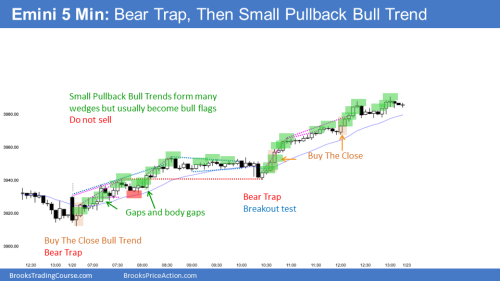The support forum is built with (1) General and FAQ forums for common trading queries received from aspiring and experienced traders, and (2) forums for course video topics. How to Trade Price Action and How to Trade Forex Price Action videos are consolidated into common forums.
Brooks Trading Course social media communities
Hi, love the course, but this one is stumping me. Obviously we want to make more than 2x actual risk on a trade, but Al says the math is good to take it if we want. How is this possible if the larger initial risk stop will sometimes be hit? At 60% loss rate, wouldn’t that practice doom an account?
I've been struggling with this too, but what makes sense to me is...
Let's say you take a swing trade setup with 40% probability of a 2R profit (2x initial risk). When you say your stop is hit 60% of the time, that's based on giving it room to your 2R profit. But sometimes the market will go up 0.5R, 1R, 1.5R etc. and then go down and hit your stop. Now, let's say your initial risk is 5 pts, and your actual risk is 2 ticks, then 2x actual risk is 4 ticks or 1 pt, and the market has much higher probability than 40% to get 1 pt when the risk is 5. You would need to win at least 83.33% (5/6) to breakeven (excluding fees), and if it is a good setup, maybe we can estimate it is higher than that... like 90%+, and thus a profitable trader's equation.
Listen closely to the video course, and you will find that at times Al Brooks will say 40% of the time, you will get your risk several times or get stopped out of a swing trade. 60% of the time, you will make a little and lose a little on the trade. This means that the better one is at exiting the trade when the premise is no longer valid, the better their math will be.
Let's take a 40% probability swing trade, and you go for 2x your risk. If the probability is only 40% and you only get 2x your risk, it is not a great trade because the math is marginal at best. It is rare to take a reasonable stop entry that is truly only 40% probability when you enter.
For example, look at the end-of-day stop entries that Al marks up each day. Notice how on most of the stop entries he marks, you would exit around breakeven when you are disappointed by the follow-through. So the reality is the better you are at trade management, your probability increases, and your loss per trade will not always be a full-size loss. If you take a stop entry in a bear trend and put your stop one tick below the signal bar that is 4 points tall, what are you going to do if you get two small legs up to the moving average and not have a low 2 short with a bear bar closing on its low? You will likely exit the trade with a small profit or loss.
The topic above brings up an interesting discussion on 1:1 Risk/reward trades. For example, when you buy a breakout, your reward is often the size of your risk.
You bought bar 1 last Friday (see chart below). Your risk is the top of bar 1, and you think the probability is 60% chance of a measured move down. Note, I would argue it is not a high probability to sell below bar 1, but let us assume it is for argument's sake. The bar 2 bull reversal bar damages your premise and lowers your probability of a successful short. Let's say you conclude that at the close of bar 2, your premise is now less than 60%. Since 60% is the minimum requirement for a 1:1 Risk/reward trade, you must exit the trade immediately because the trader's equation is now negative. When your premise changes, you will not let your stop get hit above bar 1, and you will exit as quickly as possible.
Back to your question above, traders starting out have a hard time understanding when the probability changes, which is why most should look for swing trades with the potential to get 2x their initial risk. While 2x actual risk works, that is assuming that the trader is capable of not taking a full-size initial risk loss every time the trade does not work out.

